When we arrived in Key West, after our overnight stay at Looe Key Reef,… (See that post here …. https://learntoliveaboard.com/2016/07/scenes-from-along-the-way-to-dry-tortugas-via-key-west/ ) we spent about 90 minutes navigating the entrance to Key West from the South. There was no shortage of small and large traffic including a departing cruise ship. We had called ahead and arranged for a mooring ball in the Garrison Bight Mooring Field.
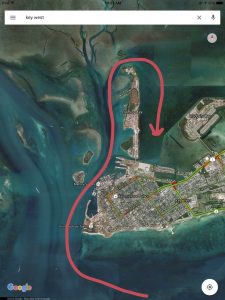
We made our way around Fleming Key, which is the home of the U.S. Army Special Forces Undwerwater Training Center which is located at it’s north tip. The island also has a waste water treatment system and a Dolphin Training Center !! You do see a conspicuous number of dolphins cruising between the boats anchored on the west side of the island. There are A LOT of boats anchored on either side of the channel in the area between Key West proper and the channel on the west side. There are a great many people who find it cheaper to buy a boat and live at anchor than to rent an apartment or commute from the upper keys when working in Key West.
This was the first time we tried our tactic of picking up a mooring ball from the stern swim platform (Kim’s idea). I have to say, it worked really well and avoided all the extra stress and strain of leaning over the bow to snag the pennant. The bow of Kitty Hawk is about 5′ above the water line. Our initial concern was that the weight of the boat would make getting the pennant from the stern to the bow impractical. We used our “Grab-n-Go” (a special spring loaded, gated, stainless steel hook that attaches to an extendable boat hook) to grab the pennant and lead it forward to our lines. Here’s a diagram for anyone unfamiliar with a mooring ball….
The 2′ to 3′ white, floating ball, usually has a blue line running horizontally around it, is attached to the bottom by a piece of heavy chain. A steel rod or chain runs through the ball to the chain that leads to the bottom. At the top, is a steel loop or large eyebolt that attaches to the pennant. On the bottom of the body of water there might be a large concrete anchor or really anything heavy, sometimes there is a helix style pin screwed directly into the sea or lake bottom. The pennant is the (normally) yellow tether, usually a heavy nylon rope with a loop covered by chafe guard on the free end.
The mooring ball was about $300 for a month, as opposed to $1700 a month for a dock in Key West. If you plan to stay on a ball more than 17 days it is actually more affordable to just pay for a month on the ball. The downside is that the mooring field is a 15-20 minute (sometimes pretty wet) dinghy ride in to the city dock and about a mile walk to downtown. We didn’t find that too bad most days since we counted the walking as our exercise for the day.
We spent just over three weeks in Key West not counting our small break for our trip to Dry Tortugas.
Here’s some shots from Key West…..I took these with my iPhone 4S….I either need a new phone or a dedicated camera…..
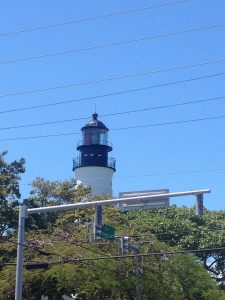
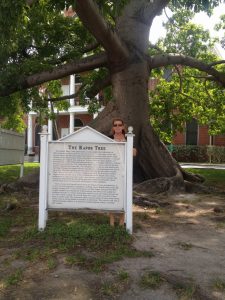
I would have liked to enlarge these remaining photos but the software for the blog seems to be wiping out the rest of the post every time I try to do so. Sorry…I’m afraid you’ll have to click on them to see greater detail…..
While we were in Key West the “America 2.0” was in port making daily sunset cruises and short local charters. She’s a model of the original Schooner America that won the first America’s Cup in 1851. She’s 105′ overall with 3600’sq of sail. She also has freestanding carbon fiber masts.
 Kim with “shot cannon” at the entrance to Fort Zachary Taylor.
Kim with “shot cannon” at the entrance to Fort Zachary Taylor.
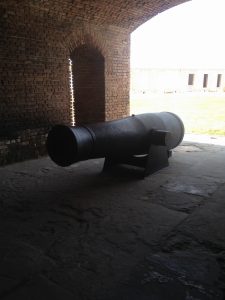 A cannon restored and mounted inside the fort.
A cannon restored and mounted inside the fort.
There’s a pretty cool story about the restoration of the fort in Key West. Construction for the fort was begun in 1845. It was originally constructed by the army and used heavily in 1898 in the Spanish American War. In 1947 the fort was turned over to the U.S. Navy and was used for storage. It was basically a dumping ground and most of the historical parts of the fort were buried. In 1968 a local named Howard England recruited volunteers to excavate the fort walls and restore the cannons. It was discovered that the fort contained the largest number of Civil War Cannons anywhere. England invested ten years restoring the fort. Thanks to his efforts and his volunteers nicknamed “sandhogs” the fort went from abandoned dumping ground to tourist attraction with a beach covering 87 acres.
Some photos from around the fort ……
Next time ….Key West Part Deux…..or part drunk?
Auto Amazon Links: No products found.
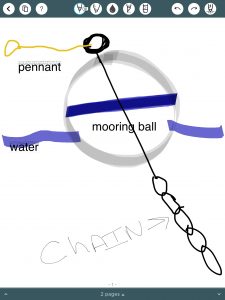
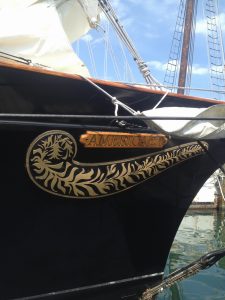
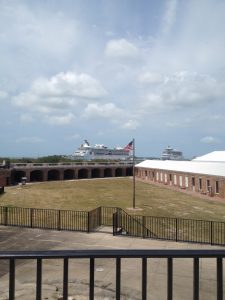

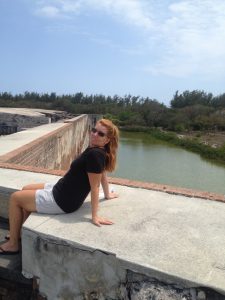
Really interesting…as always! Looking forward to Key West Part Drunk.